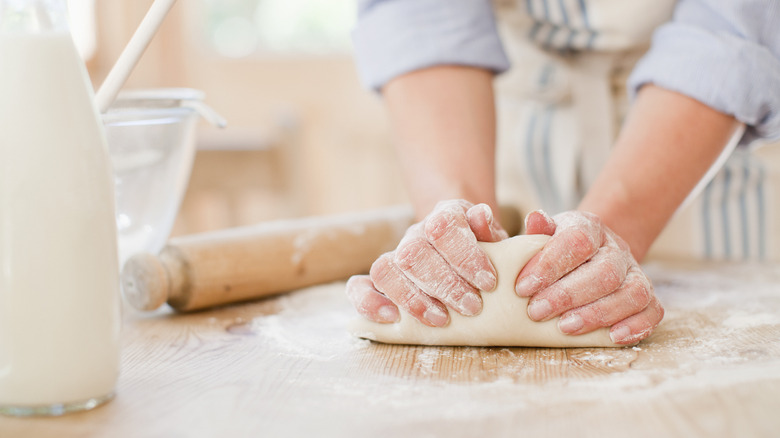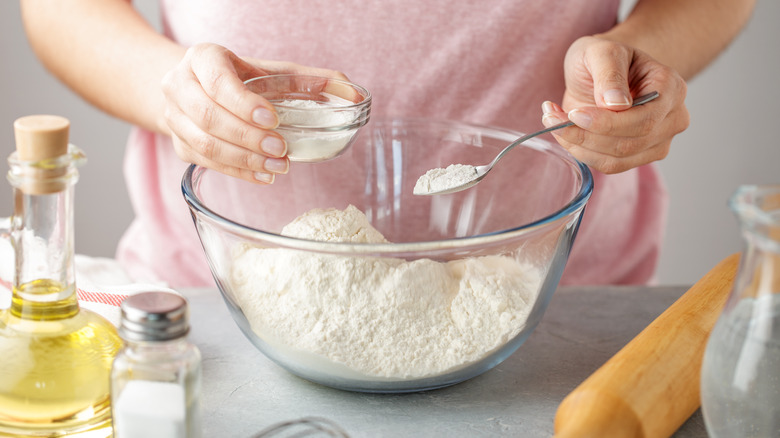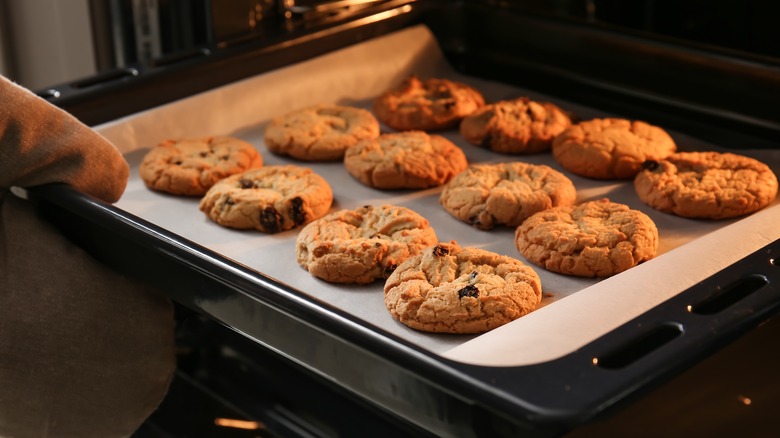The Ticket To Making Self-Rising Flour From Scratch
With the variety of flours out there, many home bakers may wonder just which type they should use for the best possible results. Making the right selection is especially crucial when it comes to all-purpose and self-rising flour, each of which serves a distinct yet important function in the kitchen. All-purpose flour is used in a wide range of baked goods, but because all-purpose varieties tend to contain less gluten, they're not ideal when making certain recipes, such as bread. They also lack the ingredients necessary to make dough rise to the desired level.
As a result, self-rising flour is often the better option thanks to the inclusion of baking powder and salt. These ingredients act as leaveners, which means they allow dough to rise without the need for yeast. In addition to bread recipes, self-rising flour is the right choice when making things like biscuits, pizza dough, and muffins. And if you ever find yourself without self-rising flour on-hand at your home, there's a helpful hack that allows you to make some in a pinch.
No self-rising flour for dough? No problem
Even seasoned bakers may find themselves without some essential ingredients when creating their favorite baked goods at home. If you're missing self-rising flour, you don't need to drop everything to make a trip to the store. You can actually create your own using ingredients you probably already have in your pantry. You'll need all-purpose flour, baking powder, and salt, which must be combined in the proper amounts to ensure the dough rises to perfection. Accordingly, take one level cup of flour and incorporate 1 1/2 teaspoons of baking powder and 1/4 teaspoon of salt.
Upon whisking flour, baking soda, and salt together, you can then use the incorporated ingredients to take the place of store-bought self-rising flour. If you're making a cake, you can tweak the recipe slightly to achieve the desired outcome. In this case, add 1/2 teaspoon of baking powder and 1/4 teaspoon of salt to a level cup of cake flour, which is a finely textured soft-wheat flour with a low gluten content. Of course, there are many other baking tips you can utilize to take your creations to the next level in both taste and texture.
Essential baking tips to have in your arsenal
Baking isn't just about adding the right ingredients, it's also about how ingredients are added. The techniques you use can be just as important as what's included in the recipe. That's why it's a good idea for bakers of all skill levels to acquaint themselves with a few important tips and tricks. For instance, "creaming" butter and sugar is integral to achieving the perfect cookie texture. Beating them together infuses the mixture with air bubbles, which helps create a pleasing crispness. Folding is another technique, and it entails incorporating dry ingredients into egg whites using a utensil called a whisk. Like creaming, folding helps retain air bubbles in the mixture to ensure a fluffy, light texture.
Baking can also be about what's left out. For example, in recipes for quick breads (think banana or zucchini bread) that often call for baking soda, using self-rising flour negates the need for those extra leaveners.
If you have issues with the workability of your dough immediately after mixing, you may want to try chilling it. This helps the flour in the recipe sufficiently soak up moisture. The cold temperature also causes the fat within the mixture to become firmer, which prevents sticking and allows the dough to maintain a good shape. If recipes don't turn out perfectly on the first try, don't despair. Like many other culinary pursuits, the best way to improve your baking skills is to get plenty of practice in the kitchen.


